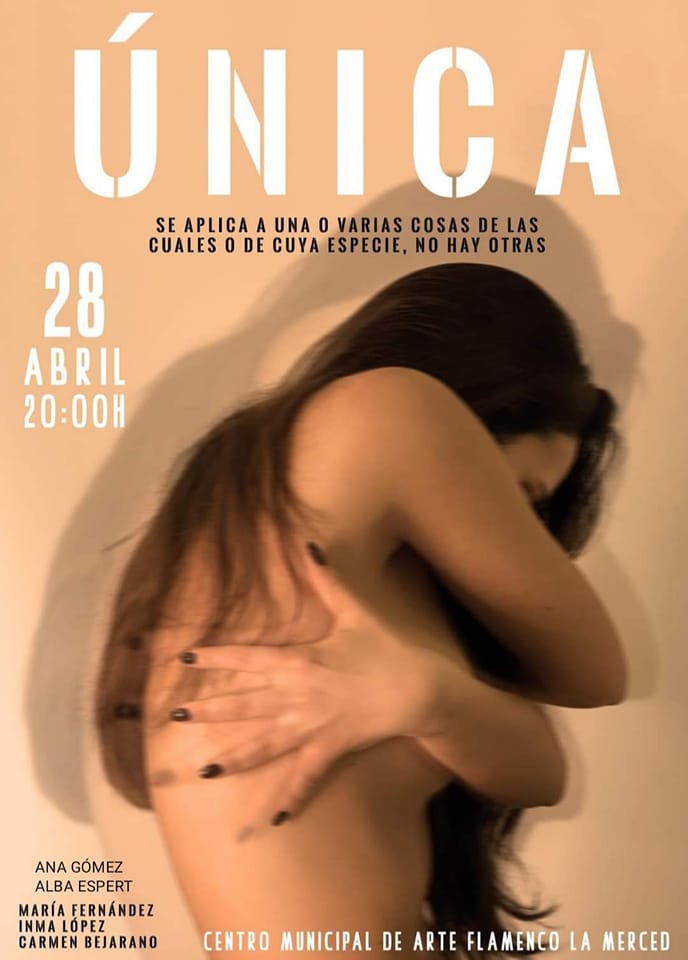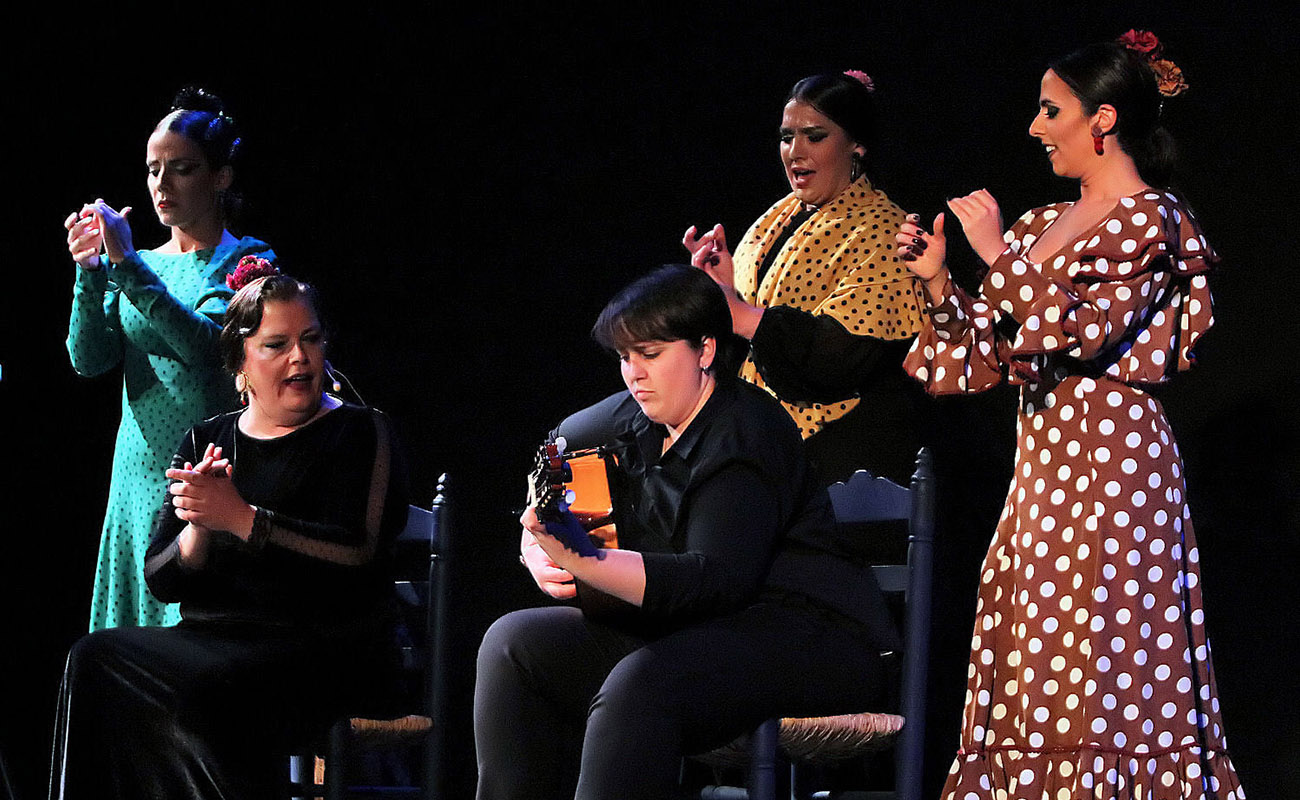Única - World Dance Day Celebration
Municipal Center for Flamenco Art La Merced - Cádiz (04/28/2022)
-

‘Única’: the dance of Cádiz is alive
Dancers María Fernández, Inma López, and Carmen Bejarano star in ‘Única,’ a feminist-inspired show with some very interesting moments. Cádiz is Flamenco series, Centro Flamenco de la Merced, Cádiz.

Since we haven't had an abundance of good news lately, let's start with one: the dance of Cádiz is alive. It is alive on stage (not only embodied by leading figures such as María Moreno or Edu Guerrero) and also among the audience. At the La Merced Center in the capital of Cádiz, for the premiere of the show Única, a large and diverse audience of all ages gathered. If there are young talents on stage and in the audience, there is a future.
However, the proposal of dancer María Fernández, presented as a chant of female liberation and sisterhood, doesn't start well. To be clear: I not only have nothing against feminist discourses, but I firmly defend them. However, the off-voice speech at the beginning of the show had an unfortunate catechetical tone, and when the doctrine doesn't dissolve in the art (of words or bodies), it becomes indigestible.
Moreover, the great danger of doctrinal discourse is to end up with broad strokes, and from there to fallacy is only one step: saying, for example, that the flamenco dancers of yesteryear, when they married, were limited to the domestic sphere or family parties is to falsify the history of dance, as if we had not had married dancers touring the world. Of course, there are reasons to denounce sexism in flamenco and in all areas of society, from harassment to the wage gap. But reproducing a simplified discourse does not help the cause.
Having made this cumbersome but necessary clarification, it's time to discuss the main issue, which is the show itself. Here we find three young dancers, rooted in tradition but also attracted to new languages, as befits the time they live in. They are supported by Ana Gómez from Arcos, a vocal torrent to the point of challenging the sound technician, and Alba Espert from Jerez, splendid on the guitar.
Inma López had the most challenging task, breaking the ice with a petenera linked to the Caracol zambra. With the scent of the fair already in the air, María Fernández and Carmen Bejarano danced some Rocío sevillanas. Transmitting more conviction when all three were on stage, they performed a soleá that ended in a pas de deux for bulerías, leaving Bejarano alone on stage.
The woman from El Puerto provided the sensual moment of the night in contrast to the dramatic slant of her peers. She undressed and dressed again while spinning to the tune of Caricias de Sal by Las Migas, showcasing an impeccable sense of rhythm and a notable freshness. She only lacked a more decisive finish, something her Triana tangos also suffered from, but she left a very good aftertaste.
Fernández also did so by appearing among the audience with the martinete, then carrying the bata de cola as if it were a cross, and once on stage, swaying like a canopy. The image had something sacrilegious, that is, interesting, and ended with the dancer taking off her bra but modestly covering her chest. As a fashionable singer would say, I don't know who is afraid of breasts: but the audience, who has already seen everything, certainly isn't.
In her solo, Espert was able to shine perhaps without the pressure of matching Ana Gómez's strength. The bajañí played by women, whose roots also delve deep into the mists of time, poses a challenge and a clear unfinished task, and I am convinced that from the art of Espert and many other colleagues, very salutary winds will come for the deep guitar. It is also striking to me that in a production like Únicas, there are several canned musical pieces, having a capable performer like the woman from Jerez. Fans will always prefer live sound.
We thus arrived at the end of the proposal, with the alegrías and bulerías of Cádiz performed by three, with a colorful play of shawls. The final catharsis, with a nod to that feminist avant la lettre named Lola Flores and her Tú lo que quieres es que me coma el tigre, put the finishing touch on a show that, as mentioned, has possible improvements but fulfills the purpose of presenting a new generation of female dancers from the Bay. But be careful: as in sports, moving up a division entails new demands, new ambitions, new risks. For now, let's stay with the good news: there is life!


